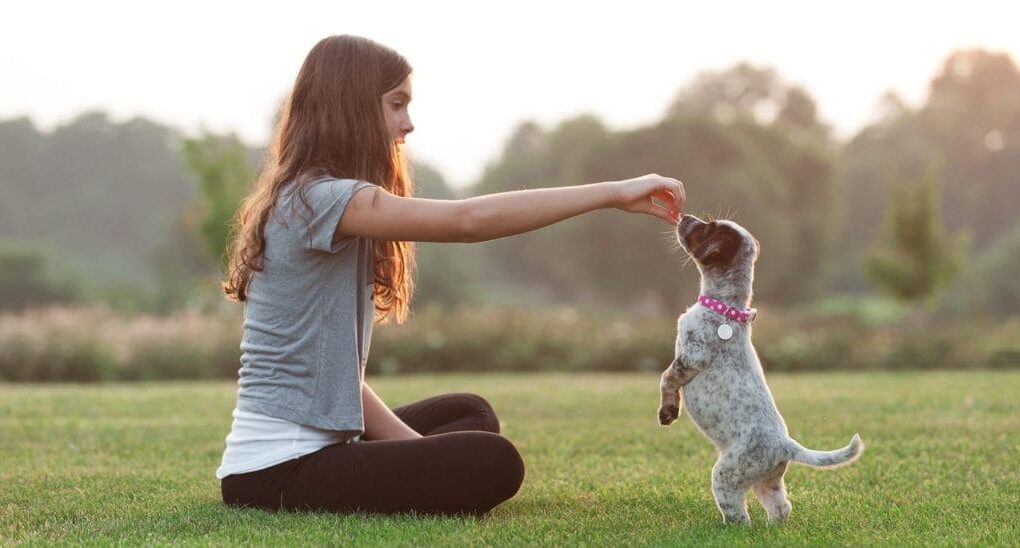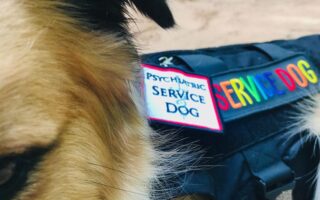Bringing a new puppy into your home is like opening a book full of unwritten chapters—each day offers the chance for adventure, joy, and learning. However, amidst the wagging tails and playful nibbles lies a vital responsibility: training. Every puppy, with its boundless energy and insatiable curiosity, holds the potential to become a well-mannered companion. Yet, the journey to transform a cheeky ball of fur into a beloved family member can be as daunting as it is rewarding. In this article, we will explore the best ways to train your puppy, providing insights into techniques that foster a harmonious bond while laying the groundwork for a lifetime of good behavior. Whether you’re a first-time pet owner or seeking to refine your skills, you’ll discover effective methods to guide your pup through this essential learning phase, ensuring a happy future together.
Table of Contents
- Choosing the Right Training Approach for Your Puppy
- Understanding Canine Behavior and Learning Styles
- Essential Commands Every Puppy Should Learn
- Positive Reinforcement Techniques for Lasting Results
- Q&A
- Key Takeaways
Choosing the Right Training Approach for Your Puppy
When it comes to training your puppy, the approach you choose can significantly impact their development. Positive reinforcement is one of the most effective methods, as it encourages good behavior through rewards such as treats, praise, or playtime. This approach fosters a trusting bond between you and your puppy, making the learning process enjoyable for both parties. Consider incorporating these key elements into your training routine:
- Consistency: Use the same commands and cues to avoid confusing your puppy.
- Patience: Allow your puppy to learn at their own pace and don’t rush the process.
- Short Sessions: Keep training sessions brief (5-10 minutes) to maintain their focus and enthusiasm.
Another training method involves clicker training, which utilizes a distinct sound to mark desired behaviors, followed by a reward. This technique helps your puppy understand exactly what they did right. Below is a simple comparison between these two popular approaches:
| Training Method | Pros | Cons |
|---|---|---|
| Positive Reinforcement | Strengthens bond, easy to implement | May lead to over-reliance on treats |
| Clicker Training | Precise feedback, builds quick responses | Requires carrying a clicker, may confuse some dogs initially |
Ultimately, the right training approach for your puppy should reflect their unique personality and your lifestyle. By experimenting with different techniques and remaining attentive to your puppy’s responses, you can create a tailored training experience that yields positive results and fosters a lifelong bond.
Understanding Canine Behavior and Learning Styles
Understanding the intricacies of canine behavior and recognizing that each puppy is a unique individual is crucial for effective training. Dogs are highly social animals, influenced by their genetic background, environment, and early experiences. Their learning styles can vary significantly, necessitating a flexible approach to training. Here are some key factors to consider:
- Reinforcement Preferences: Some puppies respond better to food rewards, while others may thrive on praise or playtime.
- Social Learning: Dogs are skilled observers; they often learn by watching their owners or other dogs.
- Attention Span: Younger puppies might have shorter attention spans, making it essential to keep training sessions brief and engaging.
- Fear and Anxiety Levels: Understanding a puppy’s comfort zone prevents overwhelming them and allows for a positive training experience.
Identifying a puppy’s personal learning style can enhance the training process significantly. Creating an environment that encourages exploration and curiosity can lead to better engagement and understanding. For instance, employing a variety of teaching methods allows for tailored learning. Consider utilizing a combination of verbal cues, visual signals, and physical demonstrations. Below is a simplified overview of various learning types:
| Learning Style | Key Traits | Training Tip |
|---|---|---|
| Visual Learners | Respond to gestures and signals | Use hand signals along with verbal commands |
| Auditory Learners | Communicate through sounds | Incorporate distinct tones and commands |
| Kinetic Learners | Learn through movement | Engage in interactive games during training |
Essential Commands Every Puppy Should Learn
Training your puppy involves teaching them a few essential commands that lay the groundwork for good behavior throughout their life. The following commands are not just useful for obedience, but also enhance the bond between you and your furry friend. Start by focusing on these key phrases:
- Sit: A foundational command that helps your puppy learn impulse control and sit calmly when asked.
- Stay: This command teaches your pup to remain in a position until you give the signal to move.
- Come: Crucial for safety, this command ensures your puppy returns to you promptly when called.
- Leave it: Vital for preventing your puppy from picking up harmful objects or food during walks.
- Down: A command that encourages your puppy to relax and can help them settle in various situations.
Practicing these commands regularly will instill confidence in your puppy and enhance their social skills. To ensure effective learning, consider setting up a training schedule that incorporates short, frequent sessions. Here’s a simple table to help you keep track of your puppy’s progress with these commands:
| Command | Practice Frequency | Progress Notes |
|---|---|---|
| Sit | 3 times daily | Responds well, mastering each time. |
| Stay | 2 times daily | Consistent for short durations. |
| Come | 5 times weekly | Needs improvement with distractions. |
| Leave it | 3 times weekly | Learning quickly, good with treats. |
| Down | 4 times weekly | Focuses well, needs more practice. |
Positive Reinforcement Techniques for Lasting Results
When it comes to training your puppy, utilizing methods that focus on positive reinforcement can create a stronger bond between you and your furry friend while promoting good behavior. This approach rewards desired actions rather than punishing mistakes, encouraging your puppy to learn through enjoyable experiences. Key strategies include:
- Immediate Treats: Reward your puppy right after they perform the desired behavior to reinforce the connection between action and reward.
- Verbal Praise: Use enthusiastic and upbeat tones to praise your puppy immediately—verbal encouragement can be just as effective as treats.
- Playtime as Motivation: Incorporate playtime as a reward. A quick game of fetch or tug can motivate your puppy to follow commands.
To ensure consistency in your training, consider establishing a schedule for rewards. This structured approach reinforces the idea that good behavior leads to enjoyable outcomes. It’s also important to gradually increase the difficulty of commands as your puppy progresses. Below is a simple table to help you track your puppy’s training milestones and rewards:
| Command | Reward Offered | Date Practiced |
|---|---|---|
| Sit | Treat + Praise | October 10 |
| Stay | Playtime | October 12 |
| Come | Treat + Favorite Toy | October 15 |
Q&A
Q&A: The Best Way to Train a Puppy
Q1: What’s the first thing I should know before training my puppy?
A1: Before you even pick up a training treat, it’s essential to understand that patience is your best friend. Puppies are like little sponges, eager to soak up knowledge but also susceptible to distractions. Establish a calm environment, free of overwhelming stimuli, which allows them to focus on you and what you’re teaching.
Q2: What training method is most effective for puppies?
A2: Positive reinforcement is widely considered the most effective method. This involves rewarding your puppy with treats, praise, or playtime when they perform the desired behavior. This not only encourages repetition of good behavior but also fosters a trusting relationship between you and your young companion.
Q3: How often should I train my puppy?
A3: Puppies thrive on short, frequent training sessions. Aim for sessions of about 5-10 minutes, 2-3 times a day. This keeps the experience engaging and prevents them from becoming overwhelmed or bored. Remember, consistency is key!
Q4: Are there specific commands I should start with?
A4: Absolutely! Start with foundational commands like “sit,” “stay,” “come,” and “down.” These are the building blocks for good behavior and will serve you well in more complex training down the line. Each command should be taught with patience and lots of praise!
Q5: How do I address unwanted behaviors like biting or barking?
A5: Redirect unwanted behaviors by providing suitable alternatives. For biting, offer a chew toy; for excessive barking, teach the “quiet” command with positive reinforcement. Instead of punishment, focus on rewarding desirable behaviors to guide your puppy toward better choices.
Q6: What role does socialization play in training?
A6: Socialization is crucial! Exposing your puppy to a variety of environments, people, and other animals helps them grow into a well-adjusted adult dog. Schedule playdates with vaccinated dogs, visit parks, and introduce them to different situations gradually to build their confidence and reduce anxiety.
Q7: How important is consistency in commands and rules?
A7: Incredibly important! Consistency helps your puppy understand what is expected of them and reinforces learning. Ensure that everyone in the household uses the same commands and rules to avoid confusion. A united front is essential!
Q8: What should I do if my puppy isn’t learning as quickly as I’d hoped?
A8: Every puppy learns at their own pace, so don’t get discouraged. If you encounter challenges, reassess your methods. Try changing the environment, varying treats, or breaking down the command into smaller, manageable steps. Remember, training should be a fun and rewarding experience for both of you.
Q9: Can training help with behavioral issues later in life?
A9: Definitely! Early training lays the groundwork for good behaviors in adulthood. Teaching your puppy essential skills and socialization techniques can prevent common behavioral issues, making for a happier and healthier relationship as they grow.
Q10: What resources can I use to further my puppy training?
A10: Many resources are available! Consider attending puppy training classes, watching online tutorials, or reading books by professional dog trainers. Additionally, consult with a veterinarian or a professional trainer for personalized advice tailored to your puppy’s unique needs.
With the right approach, training your puppy can be a joyful adventure filled with bonding moments. Happy training!
Key Takeaways
As you embark on the rewarding journey of training your puppy, remember that patience, consistency, and love are your best companions. Each wagging tail and endearing bark signals not just a call for attention but an invitation to deepen the bond between you and your furry friend. Although challenges may arise, they are but stepping stones to a stronger connection and mutual understanding. Embrace the process, celebrate the small victories, and don’t forget to have fun along the way. With time, your puppy will grow to be not just a well-behaved companion but a cherished part of your family. So, grab those training treats, prepare your heart for joy, and let the adventure begin!



